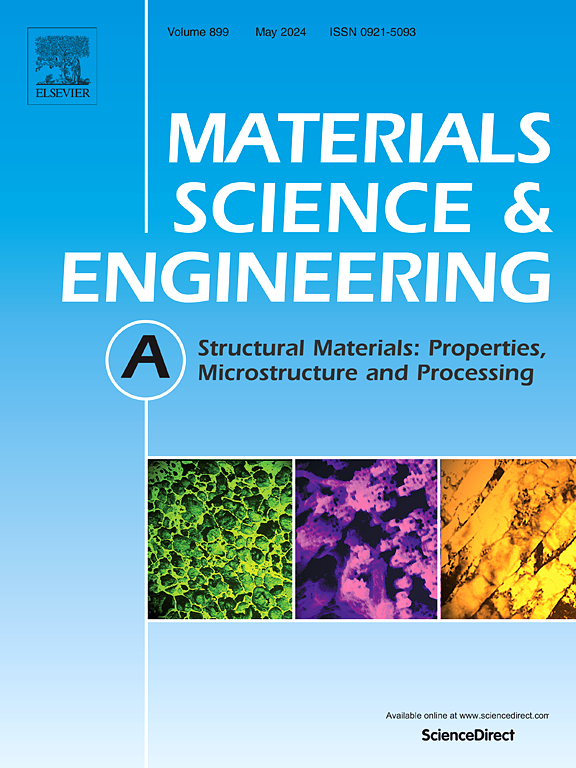Enhancing the properties of 2219 aluminum alloy deposited by resistance seam additive manufacturing through rolling and heat treatment: Microstructure evolution and strengthening mechanism
IF 6.1
2区 材料科学
Q1 MATERIALS SCIENCE, MULTIDISCIPLINARY
引用次数: 0
Abstract
Resistance seam additive manufacturing (RSAM) is a novel technology that deposits metal powder layer by layer through pressure and resistance heat to achieve bulk materials. In this study, 2219 aluminum alloy blocks were prepared using this technology, and subsequently subjected to rolling treatment and solution and aging (T6) heat treatment. The results indicated that, the rolling treatment reduced the porosity, increased the dislocation density of the sample, and enhanced the solid solubility of Cu element in the matrix. T6 heat treatment caused the dissolution of the α+θ eutectic into the matrix and then θ phase and θ′ phase were re-precipitated. Especially after the Rolling + T6 hybrid process, a uniform distribution of nanoscale needle-like θ′ phases was precipitated in the sample. The fine and densely dispersed θ′ phases not only effectively pinned dislocations but also cooperated with the matrix deformation, and under their precipitation strengthening effect, the material achieved excellent mechanical properties, with yield strength, ultimate tensile strength, and elongation increasing from 105 MPa, 126.4 MPa, and 6.9 % to 334.6 MPa, 506.6 MPa, and 16.1 %, respectively. This study provides a new pathway for the additive manufacturing of high-strength aluminum alloys.
电阻缝增材轧制热处理增强2219铝合金性能:组织演变及强化机理
电阻缝增材制造(RSAM)是一种通过压力和电阻热逐层沉积金属粉末以获得块状材料的新技术。本研究采用该工艺制备了2219块铝合金,并对其进行了轧制处理和固溶时效(T6)热处理。结果表明:轧制降低了试样的孔隙率,增加了位错密度,提高了Cu元素在基体中的固溶度;T6热处理使α+θ共晶溶入基体,θ相和θ′相重新析出。特别是经过roll + T6杂化工艺后,样品中析出了均匀分布的纳米针状θ′相。细密分散的θ′相既能有效钉住位错,又能配合基体变形,在其析出强化作用下,材料获得了优异的力学性能,屈服强度、极限抗拉强度和延伸率分别从105 MPa、126.4 MPa和6.9%提高到334.6 MPa、506.6 MPa和16.1%。本研究为高强度铝合金的增材制造提供了一条新的途径。
本文章由计算机程序翻译,如有差异,请以英文原文为准。
求助全文
约1分钟内获得全文
求助全文
来源期刊

Materials Science and Engineering: A
工程技术-材料科学:综合
CiteScore
11.50
自引率
15.60%
发文量
1811
审稿时长
31 days
期刊介绍:
Materials Science and Engineering A provides an international medium for the publication of theoretical and experimental studies related to the load-bearing capacity of materials as influenced by their basic properties, processing history, microstructure and operating environment. Appropriate submissions to Materials Science and Engineering A should include scientific and/or engineering factors which affect the microstructure - strength relationships of materials and report the changes to mechanical behavior.
 求助内容:
求助内容: 应助结果提醒方式:
应助结果提醒方式:


